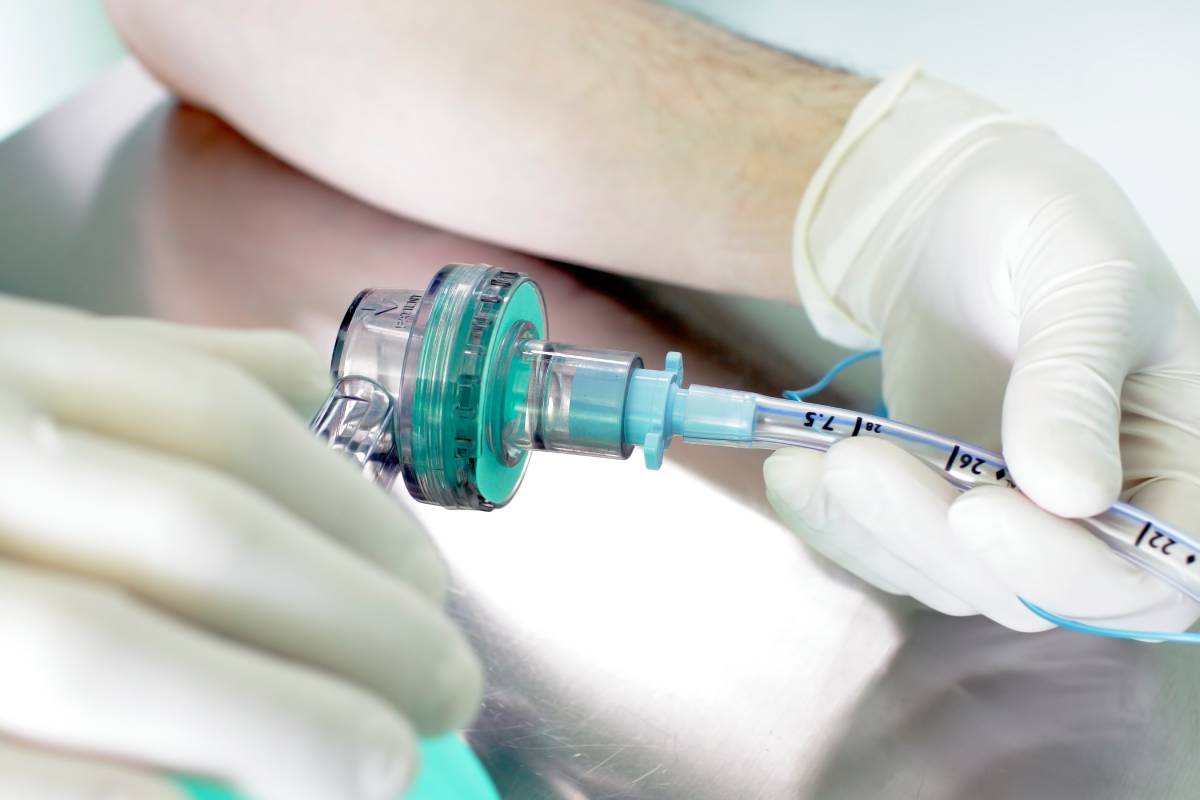Endotracheal intubation is a common but high-risk procedure used to ensure airway patency and oxygenation for critically ill patients and patients undergoing general anesthesia. Intubation is one of the most frequent procedures performed in US hospitals with an estimated 1.6 million procedures done annually in critically ill patients.1 However, there are risks associated with this procedure including failed attempts, which increases risk for hypoxemia and death. A 2019 prospective observational study by Russotto et al. estimated that out of almost 3000 intubations performed, 20% were not successful on the first try, with 15% of patients requiring a second attempt and 5% of patients requiring more than 2 attempts.2 Each attempt can cause potential airway swelling and edema, as well as increase the risk of major adverse events such as respiratory failure, hemodynamic instability, and neurological impairment.2 There are two devices that can help facilitate an endotracheal intubation, the stylet and the tracheal tube introducer, colloquially referred to as a “bougie”.
The devices require different endotracheal tube insertion methods. A stylet is a metal rod placed inside the endotracheal tube that can be manually bent to fit the patient’s airway and is inserted together with the tube. Once the tube is in place, the stylet is pulled out. A tracheal tube introducer is a plastic rod that is first placed inside the trachea, which is then used as a guide to insert the endotracheal tube over. Use of a stylet in first attempts of endotracheal intubation is common.3 An area of new research is the comparison of endotracheal intubation success rates with a stylet versus a tracheal tube introducer.
There has been promising data that bougies may improve first attempt intubation rates. In a 2021 prospective study by Latimer et al., paramedics routinely used bougies for first attempt intubation in the out-of-hospital setting which resulted in a significant improvement in first attempt intubation success rate, from 70% to 77%.4 In a 2017 observational study by Driver et al., first pass success was greater with the bougie than without (95% vs 86%). However, the attempt duration with a bougie was 40s vs 27s without a bougie, suggesting that bougies may be useful for intubation success but with a time cost.5
A 2022 randomized clinical trial analyzed the success rate of endotracheal intubations on the first attempt and incidence of severe hypoxemia with a stylet or bougie in multiple hospitals across the U.S.6 1102 patients were randomized to have intubation done with either a stylet or bougie. Operators, the clinicians inserting the tubes, received education for inserting both devices. 80.4% of the bougie group had successful intubation on the first attempt while 83.0% of patients in the stylet group had successful intubation on the first attempt. 11% of patients in the bougie group had severe hypoxia after intubation while only 8.8% in the stylet group experienced hypoxemia. However, the difference for both these outcomes were not statistically significant, suggesting there is no major difference in using a stylet or bougie for successful first attempt endotracheal intubation or severe hypoxemia.
Currently, the choice of first attempt intubation with a bougie or stylet seems to be based on individual clinician preference and hospital-specific protocols. Advantages to the bougie include potential improvement in success rates in out-of-hospital intubations. However, for critically ill patients within the hospital, there does not seem to be an advantage to using the bougie over the stylet, which could potentially be related to the increased time intubations with a bougie require. More research needs to be done to explore specific populations in which first attempt intubation with a bougie may be preferred.
References
- Pfuntner A, Wier LM, Stocks C. Most frequent procedures performed in US hospitals, 2011: statistical brief #165. In: Agency for Healthcare Research and Quality, ed. Healthcare Cost and Utilization Project (HCUP) Statistical Briefs. Agency for Healthcare Research and Quality; 2013:1-10.
- Russotto V, Myatra SN, Laffey JG, Tassistro E, Antolini L, Bauer P, Lascarrou JB, Szuldrzynski K, Camporota L, Pelosi P, Sorbello M, Higgs A, Greif R, Putensen C, Agvald-Öhman C, Chalkias A, Bokums K, Brewster D, Rossi E, Fumagalli R, Pesenti A, Foti G, Bellani G; INTUBE Study Investigators. Intubation Practices and Adverse Peri-intubation Events in Critically Ill Patients From 29 Countries. JAMA. 2021 Mar 23;325(12):1164-1172. doi: 10.1001/jama.2021.1727. Erratum in: JAMA. 2021 May 24;:null. PMID: 33755076; PMCID: PMC7988368.
- Frerk C, Mitchell VS, McNarry AF, Mendonca C, Bhagrath R, Patel A, O’Sullivan EP, Woodall NM, Ahmad I; Difficult Airway Society intubation guidelines working group. Difficult Airway Society 2015 guidelines for management of unanticipated difficult intubation in adults. Br J Anaesth. 2015 Dec;115(6):827-48. doi: 10.1093/bja/aev371. Epub 2015 Nov 10. PMID: 26556848; PMCID: PMC4650961.
- Latimer AJ, Harrington B, Counts CR, Ruark K, Maynard C, Watase T, Sayre MR. Routine Use of a Bougie Improves First-Attempt Intubation Success in the Out-of-Hospital Setting. Ann Emerg Med. 2021 Mar;77(3):296-304. doi: 10.1016/j.annemergmed.2020.10.016. Epub 2020 Dec 17. PMID: 33342596.
- Driver B, Dodd K, Klein LR, Buckley R, Robinson A, McGill JW, Reardon RF, Prekker ME. The Bougie and First-Pass Success in the Emergency Department. Ann Emerg Med. 2017 Oct;70(4):473-478.e1. doi: 10.1016/j.annemergmed.2017.04.033. PMID: 28601269.
- Latimer AJ, Harrington B, Counts CR, Ruark K, Maynard C, Watase T, Sayre MR. Routine Use of a Bougie Improves First-Attempt Intubation Success in the Out-of-Hospital Setting. Ann Emerg Med. 2021 Mar;77(3):296-304. doi: 10.1016/j.annemergmed.2020.10.016. Epub 2020 Dec 17. PMID: 33342596.
